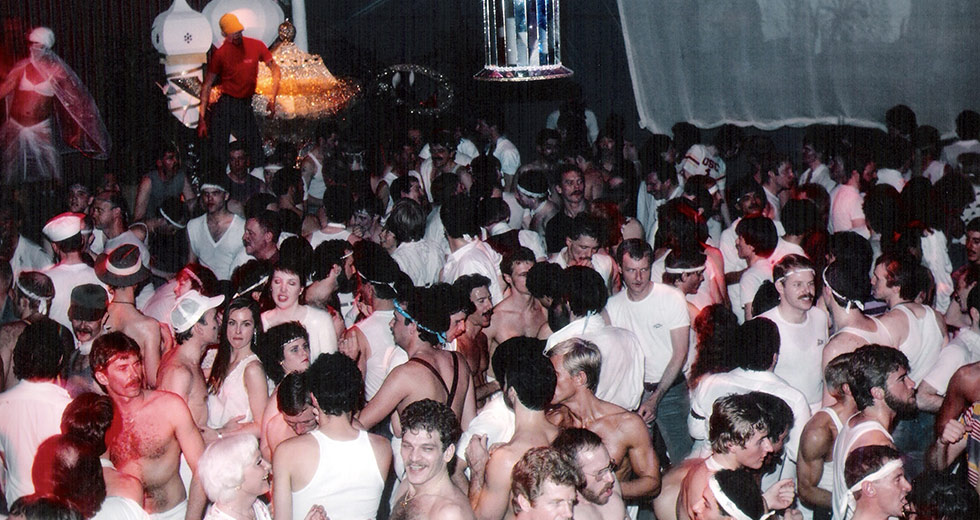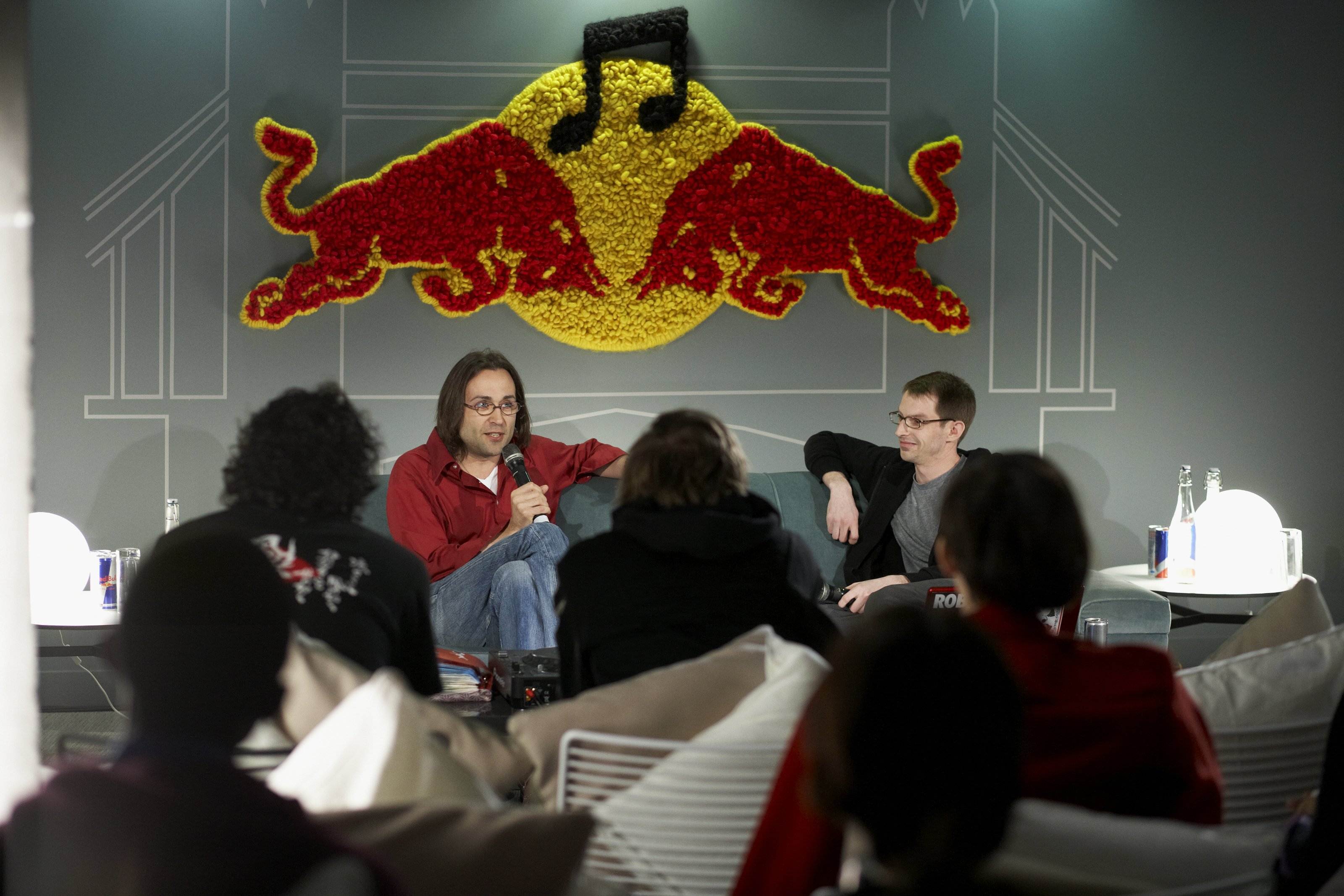Nightclubbing: Your Sisters’ House
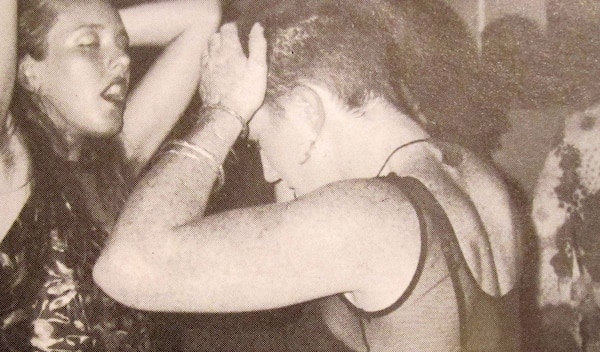
A tribute to the pioneering, feminist consciousness-raising event.
The typed memo is dated April 27, 1993, and worn to the point of translucence. Headlined “Woman Thang,” it begins, in part:
NEED A NAME FOR COLLECTIVE
NEED TO WRITE A STATEMENT OF PURPOSE: i.e. Such and Such Inc. is a nonprofit public benefit collective whose mission is blah blah empowerment blah blah fundraising blah blah planetary healing blah blah party blah blah multimedia.
The author, Liz Roberts, who’d called the meeting that helped bring her new project’s idea(l)s into focus, would make a more or less complete stab at that statement of purpose a month later. “Your Sisters’ House is a nonprofit benefit collective whose mission is to create a new model of health, empowerment, and celebration for all people through dance, information, ritual, and copious doses of female energy,” she wrote on May 28. “It is our intent to offer a place of imagination, safety, hope, love, playfulness, and community while simultaneously generating income for existing political and social organizations; we believe that by sharing ecstatic experiences we are doing nothing less than healing the planet.”
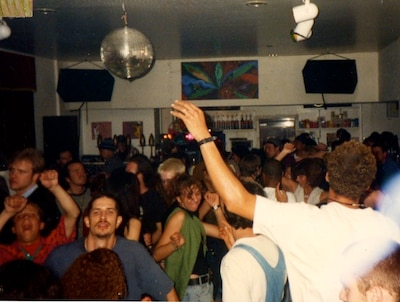
Roberts’ utopianism fit right into her environment. Early ’90s San Francisco was full of cheap, large warehouse spaces, and psychoactive drugs had surged in quality and availability in volumes unseen since – you guessed it – the ’60s. “E was everywhere,” says Shana Hardy, Your Sisters’ House co-founder and event photographer. “You’d see Special K, tons of meth, people still smoking a lot of weed to come down after parties, plenty of psychedelics... Really, anything and everything.”
By the time Roberts began solidifying her manifesto, the Bay Area had one of the key United States rave scenes, large enough to accommodate both the straightforwardly commercial Toon Town and the bohemian-styled house-heads of Wicked and the Gathering. There were club nights, outdoor parties from the Full Moon Massive and Mother Earth Sound System; even SFRaves, the earliest regional U.S. rave email list, was throwing parties. “It really was an explosion,” says Roberts. “At first you’d feel like you’d get a couple flyers a night – and then you’d just get bombarded with them. And they’d get more outrageous and more colorful and more fancy.”
“We are not interested in alienating that which is male.”
Not to mention more civic and politically minded. In particular, Come-Unity, where co-founder Malachy O’Brien, prior to a 1993 van accident that left him paralyzed from the neck down, would hand out pamphlets about the environment. Founded by Roberts, with Hardy in the stew early, Your Sisters’ House – which began that June 6 and took place every Thursday at a series of locations for a year – fit its place and era to a tee: The first concentrated attempt to cross a feminist consciousness-raising group with a rave crew.
Roberts got the word out via a freeform announcement titled “Your Sisters’ Rant” (“We are not interested in alienating that which is male”) that was widely reprinted in pamphlets and zines. But the parties themselves weren’t heavy-handed. “It was not commercial, but not obnoxious about it,” says journalist Tamara Palmer, a Bay Area native who played her first-ever DJ set at one of the crew’s parties in August of 1993, recalls, “It was a very open, loving vibe: ‘We’re your sisters. We’re your family.’”
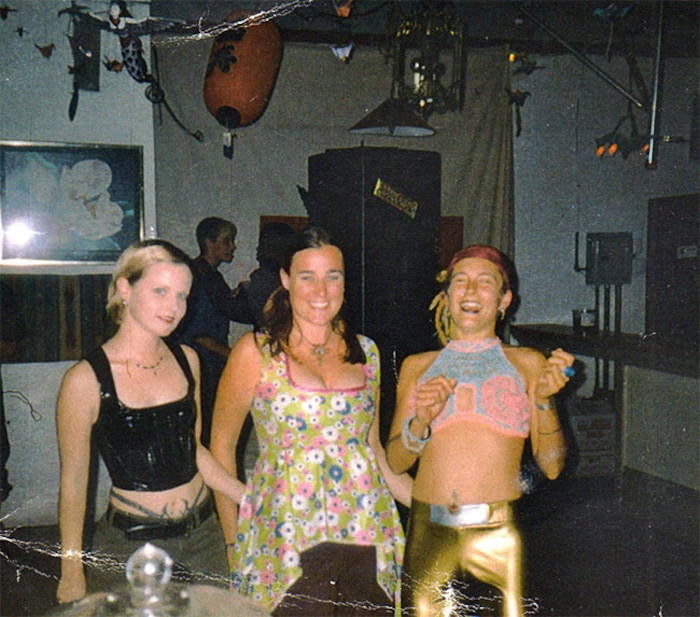
Raised in Rockland County, a suburb just north of New York City, Roberts moved to the Bay Area in 1991 after earning a degree in women’s studies and political science. “I went out to San Francisco with the intention of doing activism,” she recalls over lunch at a Brooklyn taqueria. “I was very focused on social justice as an idea, but I hadn’t been fully radicalized at that point. I ended up working at cafés and at a Jewish community center when I began raving.”
It started when a friend took Roberts to a Mr. Floppy’s Flophouse party in the East Bay. “I was really hooked on the music. I danced my ass off all the time, even if I didn’t take anything. I quit smoking cigarettes when I figured out I could dance longer. I was so fascinated and excited [by] this movement, seemingly, emerging. I felt that’s where I wanted my energy to be. I’d always been a dancer. House music was the music I’d been waiting for my whole life, and I didn’t know it until I was experiencing it.”
Roberts took to raving as a full-time activity – “I let myself get fired” from the community center, she says. She also appreciated the physical-not-sexual vibe of the parties: “I loved to dance so much, but going to regular clubs was a turn-off. It’s a meat market and the male gaze is too much to deal with for some women. I did not in any way ever feel like anybody was [at raves] to pick people up. There did not seem to be that undercurrent. People really were there to get down.”
The scene’s militantly DIY politics appealed to her, and she’d already begun “experimenting with psychoactives” before she stated partying. Roberts had even gone to Burning Man, helping set up a rave camp in 1993 – at a point when most of that event’s participants loathed dance music.
It didn’t take long for Roberts to “sense a mild political strain” even in the middle of the dance floor. “I saw a lot of potential there. At parties in general, I was seeing information tables. People were handing out zines about peace or social change. There was this multicultural given. Everybody was interested in peace as a general concept. People would be high a lot of the time, in an ecstatic dance space – but they’d also be saying things about peace and how screwed up the outside world is, and how we need more of this to make things change in the world.”
I saw that if we were going to build anything new, women’s voices definitely needed to be there; there needed to be much more balance than there had been.
But one thing wasn’t changing. “Over time I started to notice that there were just not enough women – no women spinning, no women visible as promoters,” says Roberts. While it was rare for a mid-Nineties promoter crew not to include a woman or two, that was usually all there was, and fewer still actually played records. “I know seven female DJs on a first name basis,” an SFRaves member posted in December 1993. “I hardly ever see them at parties, I know they would like to do them, and I know that promoters and other DJs know about them . . . they’re almost totally ignored by the scene at large.”
“I was politicized as a feminist, so for me that was starting to tick away in my mind as something that needed to be addressed,” says Roberts. “In many ways, this utopian moment was unfolding. I saw that if we were going to build anything new, women’s voices definitely needed to be there; there needed to be much more balance than there had been. I would talk to people at parties; I would talk to women. People would sort of acknowledge it. And I knew a lot of women DJs who were practicing in their basements and garages.”
Roberts decided to commingle the parties she’d grown to love with the feminist-activist framework she’d been involved with for years: “We always wanted to do a meal. We always wanted a discussion group.” In the minutes of a May 11 meeting, it was noted: “Our hope is not to put men off, but to accept their support – as long as it’s support and not them coming in and running things.”
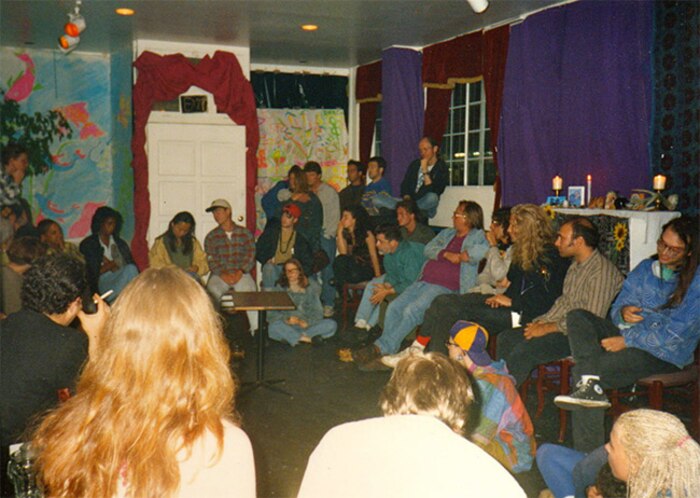
As with most raves, the music at Your Sisters’ House kicked off around 10 PM. Unlike most, the actual evenings began a couple hours earlier, with a home-cooked vegetarian dinner and a sit-down open forum about community issues. Organized as a non-hierarchical collective, everything was run by consensus. “Our aim and practice was to share leadership and responsibility democratically,” says Roberts. Adds Hardy, “We wanted to help people. It was a nurturing thing, maybe partly because it was a big group of women. We wanted to feed everyone and bring everyone together.”
“Beyond [talk about] the scene, there were discussions about topics such as substance use, sex, and racism,” Palmer wrote to SFRaves of the events in February 1994. She continued:
Attempting to bring a social responsibility to raves (a concept much talked about in the scene but not much acted upon), huge amounts of information about various community organizations, safe sex, responsible substance use, and assorted philosophical musings were to be had at an information table . . . Long an oddity in the rave scene, female DJs were featured here, surprising many people (including myself) who didn’t realize just how many of them there were.
What those DJs spun wasn’t too much different than the rest of the S.F. rave scene. In the minutes of a May 4, 1993 meeting, YSH laid out its musical policy: “Everyone would like it to be on the ambient tip; no killa techno. We like house, tribal, trance, funk, acid jazz.” With AIDS having ravaged San Francisco’s gay club scene in the Eighties, many fallen DJs’ collections had ended up back in the used bins; one early Your Sisters’ House DJ was native Arizonan Dani Siciliano, later a Matthew Herbert collaborator and solo artist, who’d moved to the Bay Area for school. “I would get most of my music from thrift stores for next to nothing,” she later told an interviewer.
We knew that some of the women were still learning to mix. But they had such heart, and they got really good records, so nobody really cared.
Not every DJ hewed to YSH’s remit. When Laura La Gassa, then living in New Jersey and an early fixture on both the SFRaves and NE_Raves mailing lists, visited San Francisco in August 1993, she made a guest appearance, spinning at a loft space on Market Street. La Gassa describes her set as “A little harder, faster, and more outer space-y than the shit everybody else was playing. Some guy comes up to me and goes, ‘Are you going to play like this all night?’ I was so afraid that he was mad at me because I wasn’t playing San Francisco house music. I said, ‘Yes?’ He put his arms around me and hugged me and said, ‘Thank God! I just moved here and I’m so tired of hearing house music all the time.’”
Palmer’s DJ debut took place the same night as La Gassa’s first appearance. Palmer had the unenviable task of following DRC, a popular trance DJ. “She was playing 120, 130 BPM for most of her set,” says Palmer. “Then for her last song she put on something obnoxious: 150 BPM. She looked at me and laughed and said, ‘I warmed it up for you.’ The turntables were hanging from the ceiling, suspended by chains – swinging – so it was nerve-wracking.”
DRC’s decks skills weren’t necessarily the norm at Your Sisters’ House. “We knew that some of the women were still learning to mix,” says Roberts. “But they had such heart, and they got really good records, so nobody really cared. Everyone was just happy to be in this really positive environment. They could feel it was beyond just that women were organizing it.”
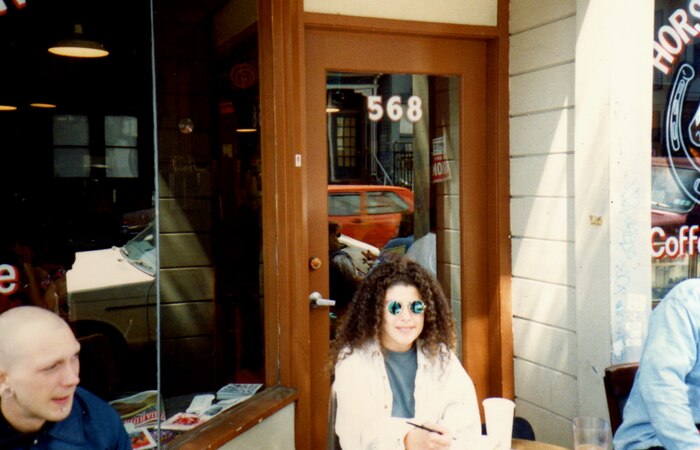
Dance music wasn’t the only thing to be heard at the parties. It was standard in San Francisco at the time for a dance promoter to be charged with providing an experience, and Your Sisters’ House was no different. Before doors opened, a musical theater-singing friend of the collective named Dina would serenade people waiting on line. “If it was your sign’s month, like a Gemini, you got into the party free,” says Roberts. Once inside, one saw a smoothie vendor – back when the drinks were “exotic” to Middle America – and, says Roberts, “an altar – natural objects and flowers and different things that were sacred to different people, figurines or fetishes. If people wanted to bring something to the altar, it’d be OK. They could make wishes and say prayers – candles and incense. We gave out fortunes to people on the dance floor – little sayings. We’d try to make it very interactive.”
The parties’ homey vibe came in part because of their relatively small size. “Probably the largest [turnout] we ever had was maybe 350,” says Roberts. “I don’t think we ever got bigger than that.” The takeaways were not large: Once, on the way back to their place in the Lower Haight at 7 AM, Roberts and another organizer were mugged of a night’s proceedings: “Five or six hundred dollars, all in fives.”
Despite its singular name, Your Sisters’ House was all over the place. The first event, on June 6, took place at Cleo’s – “A small storefront café in the Lower Haight, close to where a few of us lived,” says Roberts. “Cleo was a club DJ and when she saw we were having trouble finding a spot, she let us do our first event there. It was smaller than we’d hoped. We were really crammed in there – but that made it very electric.”
When Liz left we all felt it. She was one of the original core leaders and probably the one that was the most mature – although we were all very young – and grounded of all of us.
The plan had been to move to a permanent spot called the Oasis a week later, but the deal fell through. Three women who owned a loft in the Mission called House of Joy let them do the next party there (“It is a beautiful, spacious place with great female energy,” Roberts noted in the June 8 minutes), and the third week they moved to an outdoor park in Potrero Hill, near Hardy’s father’s house. (They frequently used his place as a map point as well.) “We’ll come together for a ceremony to acknowledge the passing of a sacred spirit,” noted the flyer. “We’ll be going until we can’t.”
“It worked in our favor for those first several parties just to get a following – people liked the unpredictable nature,” says Roberts. But over time “the lack of a permanent venue really prevented us from implementing some of the things we’d hoped. We’d always have to deal with the logistics of getting bean bags delivered and getting the sound system delivered or rented or borrowed. It was always by the seat of our pants…. While it was our intention for YSH to consistently make enough each week to pay the DJs and donate profits to organizations, we never got that stable and only ever were able to benefit Food Not Bombs.”
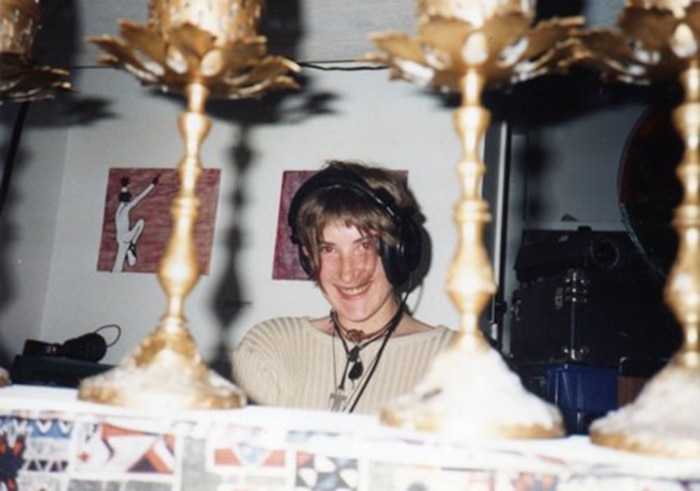
Roberts had already decided she was returning to New York by 1993’s end – in a sense, trading places with La Gassa, who was moving to San Francisco. “I told her I was moving to New York, and she said, ‘Oh, I’m going to move here,’” says Roberts. “We joked [that] we were going to exchange our sets of friends. But it really happened.”
Roberts was in New York by November 1993, staying with her parents upstate before moving to Brooklyn. With some of her new La Gassa-vetted friends, Roberts attempted to put on a party in Rockland County. “I found a converted movie theater a mile from where I grew up. We put a program together and flyered like crazy for a month. It was a freezing cold day and the pipes froze, and we had to cancel the whole thing.” She laughs. “That was my last attempt to do a rave.”
“When Liz left we all felt it,” says Hardy of the San Fransicans Roberts had gathered. “She was one of the original core leaders and probably the one that was the most mature – although we were all very young – and grounded of all of us. I was a little younger . . . and more aggressive about doing things my way.”
With Hardy helping steer the ship, Your Sisters’ House continued on for several more months. “The parties did change, but for a number of reasons,” says Hardy. “Over time, many warehouses and spaces we used for parties weren’t available [as] people we knew moved out. So we had to find other options and relied on an outer space on the bayside of the city at 24th and Illinois a lot.”
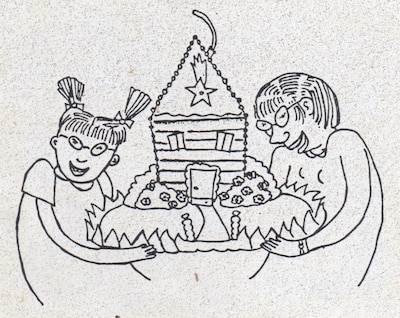
The party was still at subsistence level when Hardy took the front, by the grace of a number of friends who “provid[ed] sound, recording and transportation, among many other things” to keep the parties running, says Hardy. Roberts’ robbery in the lower Haight had done more than take the group’s proceedings: Hardy says it was “the first real money we had saved from parties . . . to buy equipment and pay people who had been helping us. We never really recovered from that.”
Another change, says Hardy, is that “There were a lot of ideas for theme parties, so we decided we would all take turns doing our ideas.” Hardy took charge of the first, at Toon Town impresario Craig Valentine’s warehouse near Fourth Street. In a cheeky nod to both the persistent calls from male DJs to join in (after all, male DJs didn’t get enough work) and to pan-sexuality across the board, that night regulars DRC and Jan Cooley were joined by local favorites Markie Mark and Neon Leon, who performed in drag. “We got shut down,” says Hardy, “but after a few great sets. It was just really starting to take off – that was a bummer. We were only there once.”
Another 1994 location was the SOMArts Cultural Center on Brannan between 8th and 9th. “I had a connection through a friend’s dad,” says Hardy, who got the space but had to skip the party because of a family visit in L.A. “Unfortunately, without Liz and myself and some of the stronger YSH individuals, it didn’t go so well,” says Hardy. “Someone graffiti’ed the walls there – it was embarrassing and we never went there again.” They also used the Spaz Warehouse – home of the “underground techno-warrior group,” per Hardy’s description, that spearheaded the mid-’90s Burning Man rave camps – as well as “a SOMA gallery with dildos on the wall.”
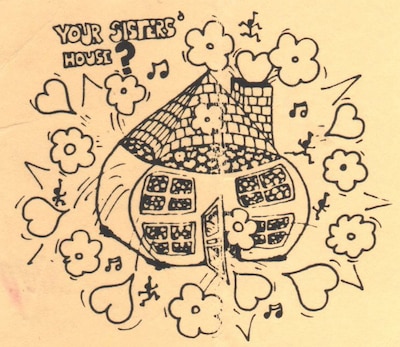
The parties weren’t progressing much, though. “I did strive to try to get us past that first bootstrapping phase and wanted to operate on a more mainstream level, like being able to book real venues, but we just never really got there – you can only expect people to help you out for free for so long,” says Hardy. “Also, later in our run, nitrous started showing up. It was very destructive to many parties, including ours.” Hardy began absenting herself from the group. “Things had changed,” she says. “People were tired and burnt out – good people left to do other things. It just ran its course. We were never able to stabilize financially.”
Your Sisters’ House fizzled out sometime in mid-1994, but its effects resonated. As “Your Sisters’ Rant” got reprinted across the country, it inspired promoters in other towns, such as Meredith Fox, who under the banner Equal Opportunity Productions put on a summer 1994 party in Minneapolis called Charlie’s Angels, headlined by YSH regular Tara.
It also sired another, much longer-running female DJ collective, Sister SF, which began in 1995 and featured several YSH alumni. “While they did things their way, they always gave us credit for helping set the stage for them,” says Hardy. Sister SF co-founder XJS (Annie Shaw) told the San Francisco Chronicle in 2001: “I was bored with women being considered a novelty. With Sister, we’re not going out of our way to say, ‘Wow – women DJing! Crazy, huh?’ We’ve moved beyond that. We want to promote women as an integral part of the scene.”
All photos from Your Sisters’ House Facebook page.
